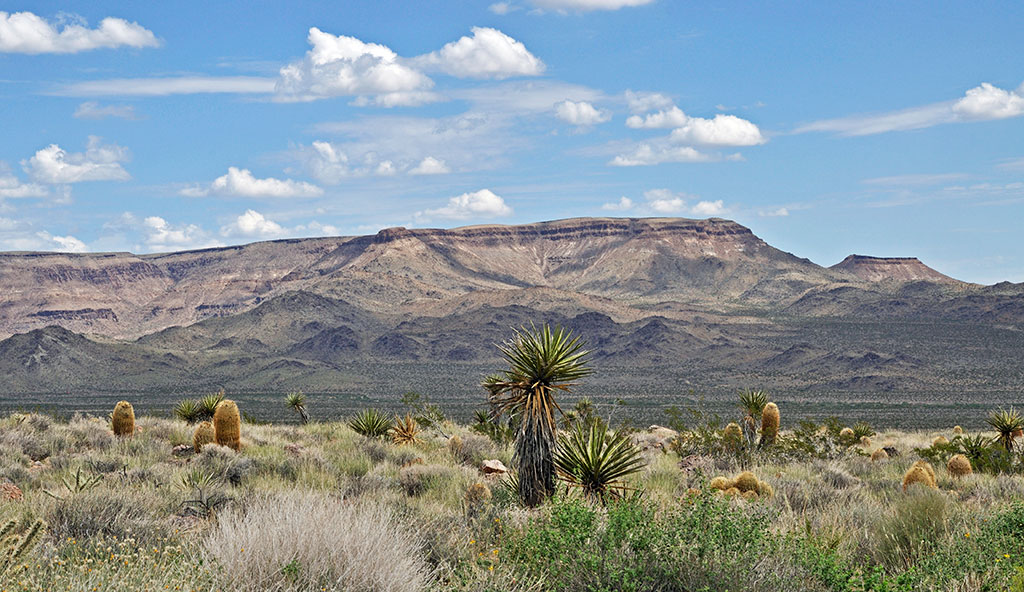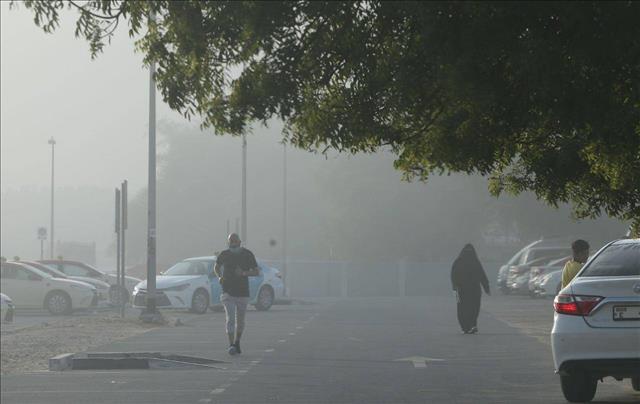There are multiple ways to depict depth in a painting. I am guessing the first to pop to mind would be linear perspective. The former occurs at the drawing stage and concerns itself with the representation of volumes on a 2D surface. It relies on trigonometry rules and it is all about shapes and scale. Today however I would rather talk about atmospheric perspective which does not come into play until later in the process ; when it’s time to bring values and color onto our drawings. Turns out — colors are a powerful tool in helping the artist to sell depth in a painting. Let me explain how that is the case.
Air isn’t made of nothing
When observing a scene, we might think the distance between us — the observer — and the object we are looking at is nothing but empty. We would be wrong. The gap is filled with air, and this is a crucial point to make. That is because air itself is filled with water particles and dust. Although they are sparse, those particles impact the light passing through them just as any other object would. There is no void, unless we try and paint a moon scene.
On that line of thinking ; have you ever wondered why the sky appears blue considering how sunlight is white ? Answer : the shorter wavelengths of the light are more easily scattered by the particles in the air than than the longer ones. Those shorter wavelengths correspond to blue hues. Thus the sky appears blue to our eyes. And for those of you that would object that sometimes the sky appears orange or even reddish ; in that scenario the angle at which sunlight enters the atmosphere is so low that most of the blue wavelengths of light are scattered even before reaching the lower atmosphere.
Back to topic. It follows that one way to think about our riddle is that there is some sky between us and the object we are observing. And the more distant the object, the more sky there is between us and the object. The closer the object, the less sky there is between us and the object.
Picture overlay sheets between you and the subject
In order to visualize it even better, let us try to picture giant overlay sheets that would be equally spaced apart and fill the distance between us and the object. Those sheets are semi-transparent and take the sky color. The bigger the distance there is between us and the object, the more sheets we can fit in the gap. The shorter the distance ; the less sheets can fit it.

What would happen in that scenario is that an object placed absurdly far away would appear almost indistinguishable from the sky color regardless of its local colors. Indeed, there would be this many sheets between the observer and the object. So much so that its colors would get progressively lost until all that would be left is the cumulative color of all the sheets. Although a single sheet is almost invisible, a stack of those can get pretty close to a 100% opacity at times.
Here are some rules of atmospheric perspective
The emergent rules that follow from that is that the further away an object is the more its colors and values are going to be compressed towards the sky color.
This means the value range gets both shifted and reduced. Shifted because the sky color is usually lighter than the object and thus the object gets lighter with distance. But also reduced, because compression occurs ; there is less of a contrast between the highest and darkest values of the object. Contrast can get very very low for distant object. An hypothetical object infinitely distant would simply appear flat and take the sky value.
It is the same for color : the range gets shifted toward the sky color —which is often some light blue— and also gets compressed so that there isn’t as much color variation as foreground objects. Remember colors travel from point A to point B through greys. In this example, you would thus get de-saturated red before you would final cross and come-out the other side blue. An infinitely distant object would ultimately take the sky color.

To depict a coherent atmospheric perspective, the most important part would be to keep that hierarchy ordered. There is no way a very distant object is going to have a wider value and color range than a close object. It is entirely possible to undermine a good linear perspective job through colors alone. We might have correct scaling, but if the colors tell us that an object is very close, then we will just understand it as being very small rather than being far away. Evidently, this comment rings true in reverse as well ; a close object lacking saturation and flat will feel just as wrong and misplaced. Thus I trust you will grant atmospheric perspective the attention it deserves.
There is one more parameter to navigate ; how much atmospheric perspective should there be in a given painting ? Well, if the coloration of the air is due largely to its water molecules, it ensues that the drier the air, the less of an effect atmospheric perspective will have. On the contrary, on days where the air is very wet, the effect is going to be much more pronounced. As a corollary to that ; we can use atmospheric perspective to tell a lot about the overall weather and dampness of a scene. However, it should be noted that atmospheric perspective is most often cranked up in art and movies even in arid places where no water can be found miles around. That is because atmospheric perspective can sell depth and it is often a primary concern.


More than one applicationA
Finally, please note that this logic can also be used for things like dust or vapor, or anything that would add matter in the air. Of course in those cases the effect would possibly be localized rather than affect the scene globally, but it is very useful to think of the phenomenon as if there were overlay sheets and to thus shift and compress values and colors towards those of the sheet. The more dust/vapor/or else between observer and object, the more shifting and the more compression. Simple as that.

